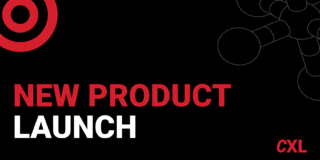User Experience Testing: The Marketer’s Guide to UX in 2023

User experience is a nebulous term. What defines a “good” UX from a “bad” UX, and what do the gradations look like between the two poles?

User experience is a nebulous term. What defines a “good” UX from a “bad” UX, and what do the gradations look like between the two poles?

In the early 2000s, DVDs were the primary way to watch videos. Netflix streaming launched in 2007, and the DVD player is now a technological antique.
Products, much like humans, live on borrowed time. From the moment they launch, they’re on a journey towards decline.
How this journey plays out is what marketers try to predict by using the product lifecycle as a model.

No one is better at building anticipation ahead of a launch than Apple. New product launches trigger publicized spec leaks and reveal events draw crowds in the millions (over 2.7 million people watched the iPhone 12 presentation live).
In the iPhone 13’s first quarter, it generated $71.6 billion in revenue (despite parts shortages and a global pandemic).
You don’t have to create Apple-level hype to see a successful new product launch. Trading app Robinhood launched with almost one million users thanks to a pinpointed market need and waitlist pre-launch campaign.

By the time Robinhood launched, it had already gained almost a million users.
The stock-trading company called out one of the biggest trading pain points (fees) in their tagline: “$0 commission stock trading. Stop paying up to $10 for every trade.”
Then they used a waiting-list product launch model to create excitement and FOMO while giving them access to beta-model feedback ahead of launch.
Robinhood’s messaging aimed at the right audience, at the right time and place, is what gained them a million subscribers before they even launched. It’s also a prime example of successful product marketing.
In this article, you’ll learn how to strengthen new product development with product marketing so you can deliver on customer needs.

Daniel J. Murphy is known for elevating SaaS startups to new levels of success. He helped Privy become one of the fastest-growing companies in the U.S., established HubSpot’s customer review program, and grew Drift’s marketing team eightfold in two years.
He helped grow these companies as a product marketing manager.
The product marketing manager (PMM) is responsible for creating and executing the product marketing strategy. It’s a vital hire for companies competing in saturated markets—which means most companies today.
In this article, you will learn the core responsibilities of the product marketing manager, plus the skills and attributes that make a truly great PMM.

In 2015, chiefmartec.com reported a “staggering” 1,876 SaaS vendors. In 2020, there were over 8,000. That’s some serious growth.
Drift’s CEO, Dave Cancel, says there are three phases to every industry:
SaaS is in the final phase. It’s now winner-take-all.
Product marketing gives you the edge to compete in this hyper-crowded market—and win. It helps you pinpoint the unique positioning and messaging that builds an emotional moat around your brand.
In this article, you’ll learn how to design an effective product marketing strategy that propels your brand to that top 1%.

Groove’s customer service platform almost died in the introductory stage because they forgot to listen to their customers. They drew people in with a product they assumed would be a hit and pushed forward without taking in customer feedback.
The result? People had a terrible experience using their product.
After turning their attention toward feedback and testing, letting the voice of their customers fuel their content strategy and product development, they took off. Three years later, they were a $5 million business.
Not revisiting your marketing objectives in the growth phase of your product lifecycle is the death knell of many startups.
In this article, you’ll learn how to develop a marketing strategy for the growth stage. We’ll also share how to achieve marketing goals at this stage, using your existing customers and experimentation to increase sales and loyalty.

Growth hacking is how Slack went from 15,000 to half a million daily users in its first year. It’s why Canva can call itself a multibillion-dollar platform and how ConvertKit pulled itself up to compete with goliaths like MailChimp and Campaign Monitor.
Growth hacking isn’t about deploying sleazy tricks. It’s about making calculated, data-driven moves for fast growth.
In this article, you’ll learn what growth hacking in marketing is and what it’s not. We’ll look at strategies to reach and engage potential users and break down examples of brands that have used growth hacking to achieve success.

A large part of landing page optimization is focusing your visitors’ attention on what matters.
There are many design theories on how exactly to do that. Most will include using what is known as a visual cue to direct attention towards a desired object.

A landing page is the first page that visitors see after clicking on your banner ad, PPC ad, or promotional email. It can be a specific page on your website or a separate page created exclusively for search engines.
Landing pages direct visitors to take a specific action, such as making a purchase, completing a registration, or subscribing to your email list.
Your landing page often determines the success of your ad campaign. A good landing page equals good ROI. A crappy landing page (needlessly) wastes money.